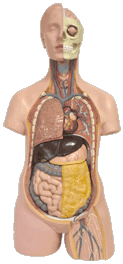At WiseGEEK, we're committed to delivering accurate, trustworthy information. Our expert-authored content is rigorously fact-checked and sourced from credible authorities. Discover how we uphold the highest standards in providing you with reliable knowledge.
What Is the Connection between the Atkins™ Diet and Diabetes?
The Atkins™ diet is a plan that stresses low carbohydrate eating. Starches and sugars are almost completely avoided in the first stages of the diet and typically remain only a small part of the overall diet even once weight loss has been achieved. Dr. Atkins' low carbohydrate diet is a source of controversy in the medical and weight-loss communities, but it is a popular method of losing weight for many people. Diabetics generally have to monitor carbohydrate intake very closely to keep their blood sugar levels within normal ranges, so the Atkins™ diet and diabetes management do seem to work together well for many people.
People who suffer from type II diabetes have typically become insulin resistant. When a person eats carbohydrates, his body breaks them down into a sugar known as glucose. The body then releases insulin that sends the glucose into the cells, which use it as fuel. If the amount of sugar in the blood remains high, insulin will generally be released regularly and may be released in larger and larger amounts to remove the sugar properly.

Insulin is still released into the bloodstream of someone who is diabetic, but the body has become resistant to it. Chronic high blood sugar levels, which is widely believed to be caused by a diet too high in refined carbohydrates such as sugar and flour, make the body produce too much insulin. Eventually, more and more insulin is produced, but the amount of glucose removed from the blood becomes less and less.
A diabetic, or someone who is becoming insulin resistant and in the first stages of pre-diabetes, is generally advised to avoid sugars, starches and processed carbohydrates. The Atkins™ diet and diabetes management have many things in common, thanks to the diet's low-carb approach. Eating as the plan suggests can often keep a dieter's blood sugar from spiking or rising too high at all. Many believe it is an ideal diet for maintaining low blood sugar levels, which can help diabetics stay healthier and may help prevent diabetes in those who are at risk.
Critics of the statements commonly made about the Atkins™ diet and diabetes often point to the amount of fat in the diet and the lack of healthy carbohydrate choices, such as fruits and vegetables. Diabetics typically do not have to stop eating all carbohydrates; they are usually encouraged to choose fruits and vegetables over processed foods such as breads, crackers and desserts. The Atkins™ diet and diabetes may seem like a natural fit as far as the low intake of processed carbohydrates, but the high protein and fat content with few healthy carbs has many in the medical establishment concerned about the long-term health of Atkins™ dieters.
Food that does not contain carbohydrates should not raise blood sugar, so meat is a carbohydrate-free staple of the Atkins™ diet. One of the top draws of the diet for many people is the idea that foods such as steaks, cheeseburgers, butter and fatty foods are not off-limits. The Atkins™ diet and diabetes may work well together to keep blood sugar stable, but too much saturated fat, which is allowed on the plan, has many experts worried about the risk for heart disease increasing on the diet.
AS FEATURED ON:
AS FEATURED ON:










Discuss this Article
Post your comments